ProView – La Sportiva Aequilibrium ST GTX Mountaineering Boot
As a Pacific Northwest local, I was very excited when La Sportiva announced a flashy new three-season mountaineering boot, the Aequilibrium. Our “upper-left” mountains tend to require versatile footwear that can handle multiple mediums in a single day, and this boot looked promising. After a prolonged production delay, I was able to get my hands on a pair and test them in the rugged and glaciated terrain of the Cascades, where their features would truly shine.
La Sportiva Aequilibrium ST GTX
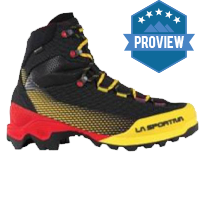
Product Name: La Sportiva Aequilibrium ST GTX
Product Description: Achieving equilibrium between technical performance and the demands for modern alpinists and mountaineers is a perpetual challenge. the state-of-the-art Aequilibrium ST GTX orchestrates a perfect blend of ultralight construction, durable materials, superlative comfort, and elite performance for moving fast in the mountains.
Offer price: $329 MSRP
-
Quality
(5)
-
Features
(5)
-
Fit
(4)
-
Durability
(5)
-
Eco-Friendly
(3)
Summary
A true-to-size boot that is well designed for different foot shapes. A very versatile piece of footwear that comes with features to improve performance and comfort. An extra gold star should go to the ability to keep snow out and feet dry.
Overall
4.4Pros
- Stability
- Flexibility for climbing
- Low weight
- Water/snow proof
Cons
- The tongue seems to crowd the neck of the boot — can cause some shin-bang
- The flexible heel gaiter and low ankle means less calf support on tough stances.
With spring melding into summer, this self-declared dirtbag started to turn his attention towards the steep peaks and beautiful country of Washington. Having started my climbing career in the North Cascades, I know to expect all sorts of terrain. I brought along the Aequilibriums to cover the gamut of glaciers, rock scrambles, and long approaches. An abnormally warm and sunny spring allowed me to test the boots on just about everything from steep scree slopes, calf deep slush, soft windblown snow, and dry rock climbs. And of course, being in the North Cascades, I also had the less desirable opportunity to get the boots on slippery log crossings, raging mountain streams, and endlessly long slogs.
Fit/Comfort
I took a gamble on the fitting of the boot, and ordered it online (I know, scary right?). Thankfully, La Sportiva’s sizing game was true as ever, and they fit snug and perfect out of the box. As a three-season boot, the Aequilibriums are a lot more comfortable than the heavier winter counterparts I have been accustomed to the past few months of climbing. As someone with categorically wide feet, they didn’t cramp my digits too bad, except on long descents (I don’t believe my toes will ever be comfortable downhill, so don’t blame the boots on this one). I did have some slight issues with the tongue of the boot crowding around my ankle and causing some discomfort, but it didn’t blister or bruise.
Look/Style
These boots knock it out of the park with rule number one, looking good. As usual, La Sportiva delivers a flashy bit of kit that is sure to wow the crowds. My personal favorite color design feature is the yellow outlined toe box, which helps identify the boot’s profile in peripheral vision, and facilitates better foot placement when climbing.
Features
When it comes to versatility, this boot has it covered. A heel welt allows the use of semi-automatic crampons, a handy feature to quickly switch between snow and rock climbing. The 3D-Flex ankle technology is not just another company gimmick; I was surprised at how well these boots could move when climbing, and yet still give good ankle support and protection. They particularly exceeded when bumbling down scree/boulder fields.
Weight/Packability
As all good three-season boots should be, these are on the nice and light size. On long 15+ mile days, or the classic Cascade extreme vertical ones, I was glad to have a boot that didn’t weigh much. I even used it for longer climbing approaches and easily stowed it on or in my pack when the going got tougher.
Function/Performance
If you can’t tell already, I loved how the boot performed. The narrow toe profile allowed for precision placements when rock climbing, the stiff platform helped reduce calf fatigue when edging on rock or front pointing on steep snow, and perhaps best of all, was the waterproofing. I can’t say enough about how these boots kept me dry. From post-holing in deep slush and powder, to sloshing through low creeks, these boots kept it all out. The heroes here are the tight and flexible neck that keeps snow from pouring in, and a boot-tongue that is sewn into the upper of the boot all the way up to the top.
Durability/Construction
As should be expected with any of the larger popular brands, this boot is made very well. The Nylon Honeycomb upper is incredibly tough and resilient to sharp granite scree, while coming in at a low weight penalty. Add to that some well-designed lace aglets for durability and a classic Vibram outsole and you have yourself a great boot.
Friendliness to the Earth
While this boot doesn’t have any of the “Eco-Green-Bio” buzzword features attached to it, La Sportiva’s contribution to the environment shouldn’t be discredited. Their operating and production facilities around the world utilize zero-waste and renewable energy systems.
The Final Word
It’s hard to find fault with a boot this well made. It’s not going to beat a rock climbing shoe, or an ice climbing boot, or a trail runner at their respective trades, but as a three-season mountaineering boot it excels at its intended purpose, versatility. A lightweight option that will get you where you need to go in the mountains and look stylish while you are doing it, I would highly recommend these boots if the fit is right!
Shop La Sportiva Aequilibrium ST GTX on Outdoor Prolink. Not a member? Apply today!
About the Gear Tester

Evan Watts
Evan grew up in the small hometown of Boring, Oregon, where he cut his teeth hiking and backpacking in the local Cascades. He now enjoys ice climbing, backcountry skiing, and trail running around in the Western States, and manages to fight off permanent employment despite an environmental engineering degree and perturbed parents.

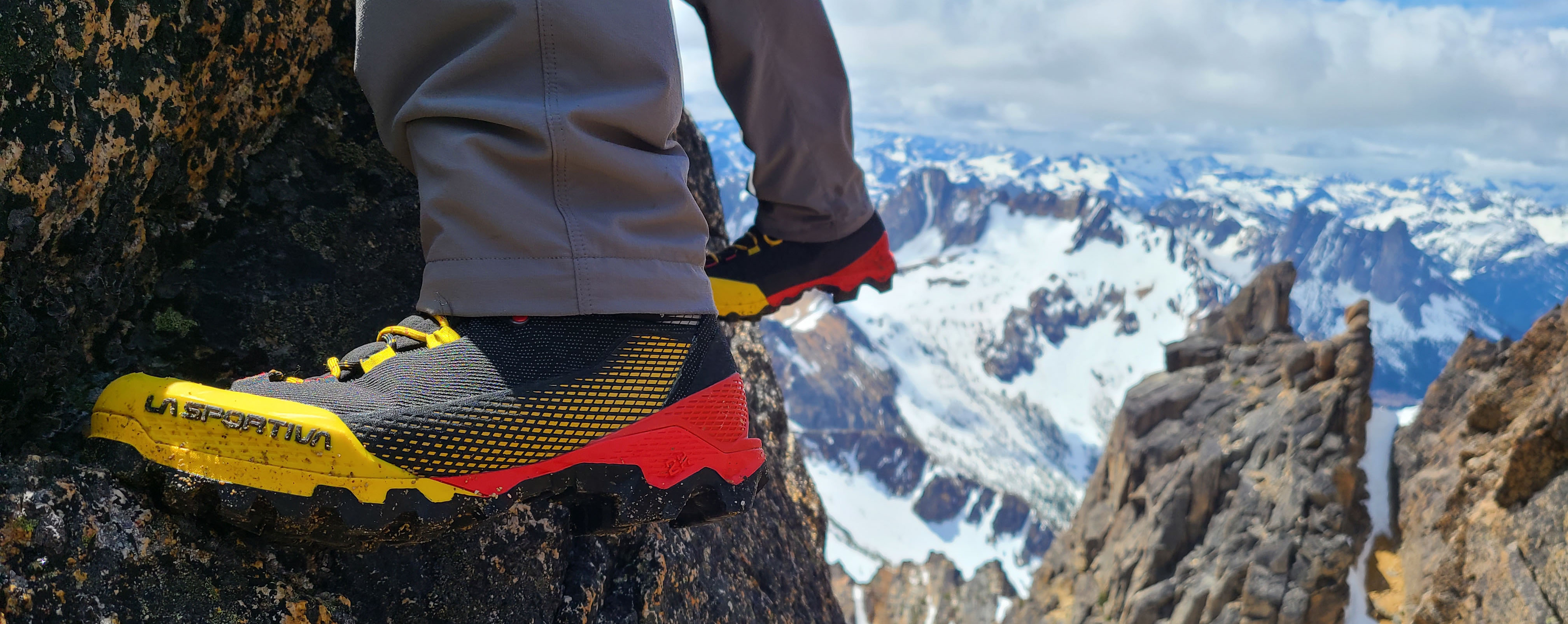
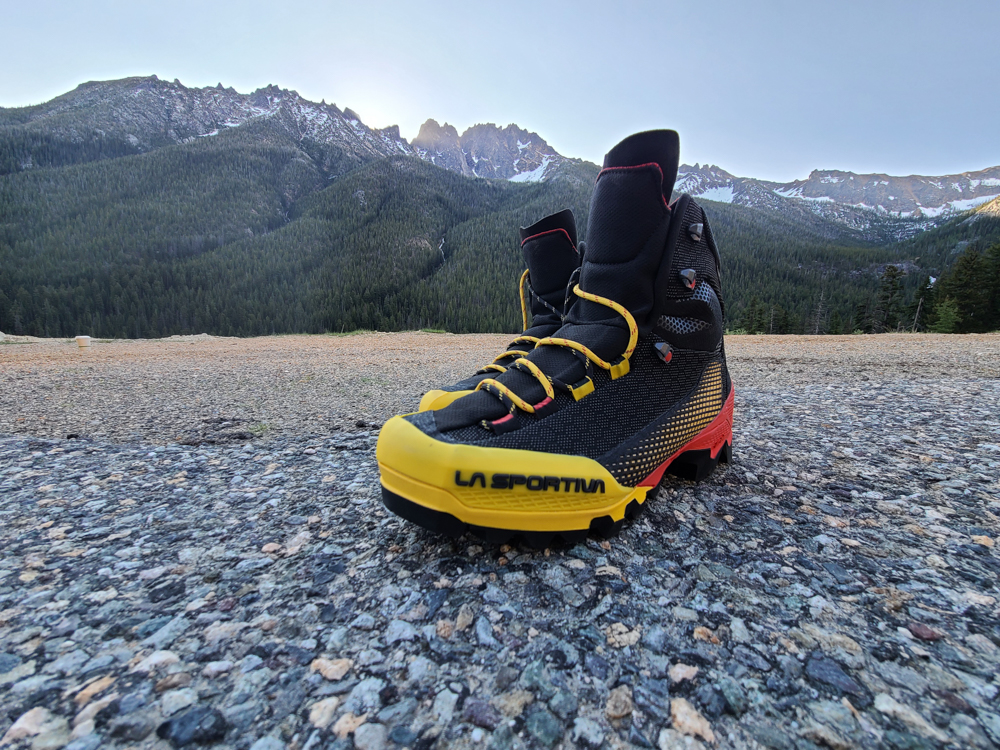
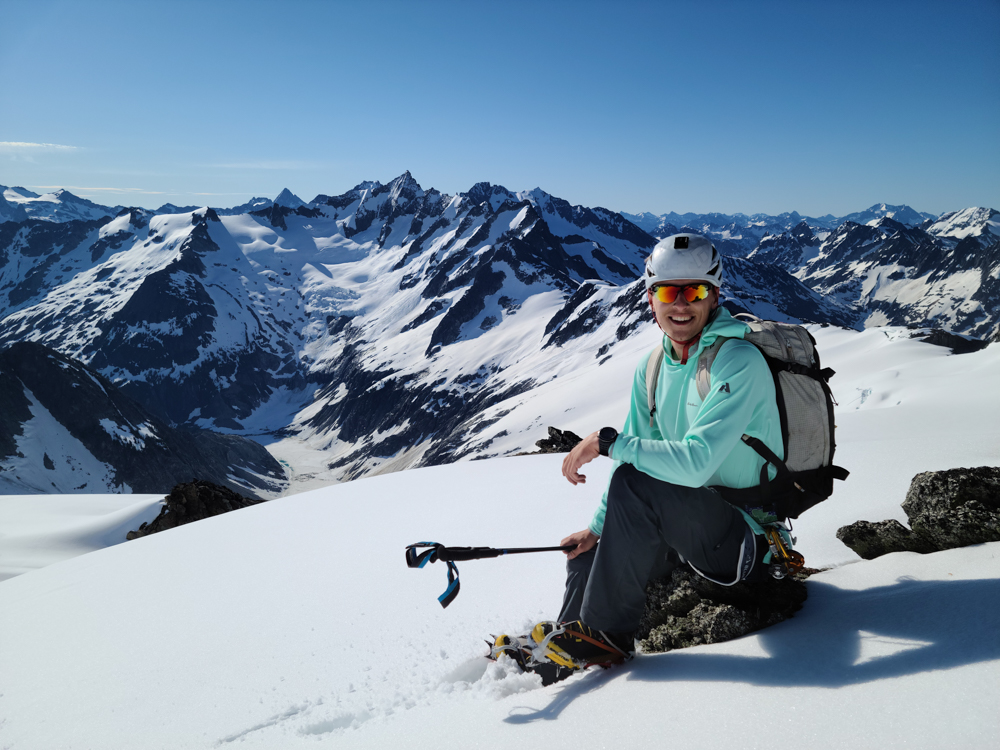
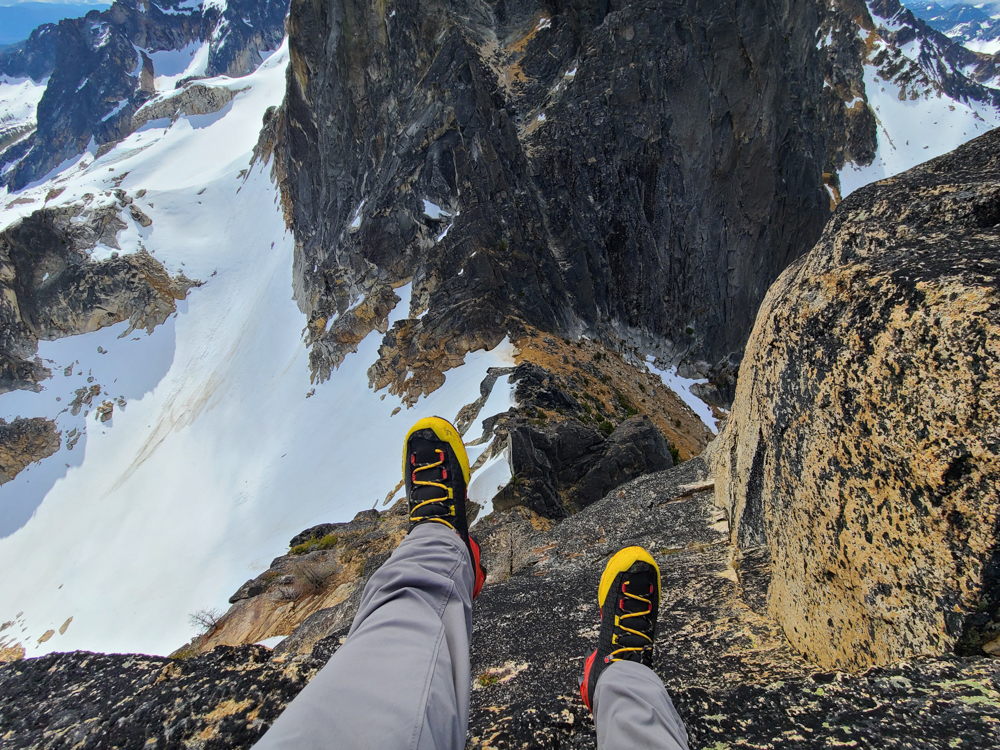
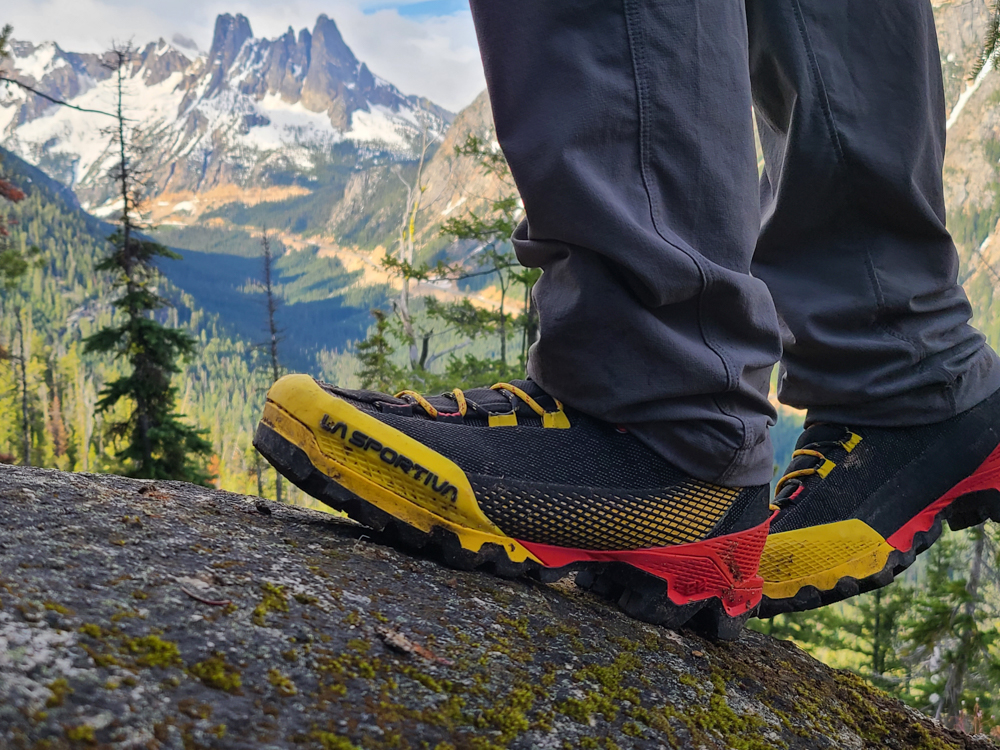
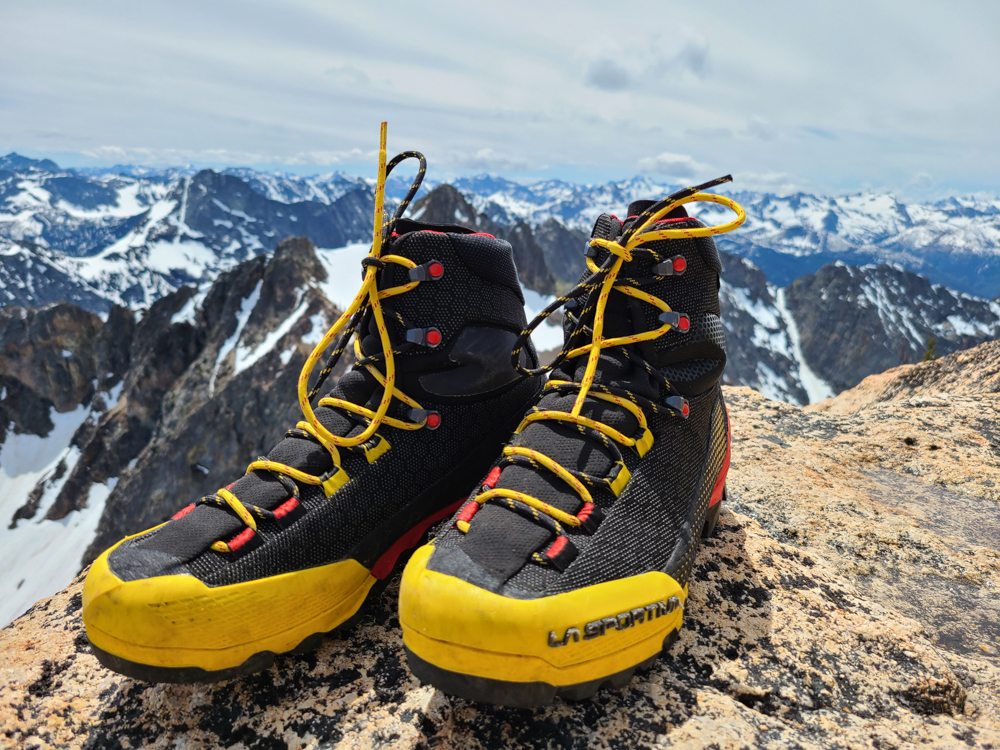
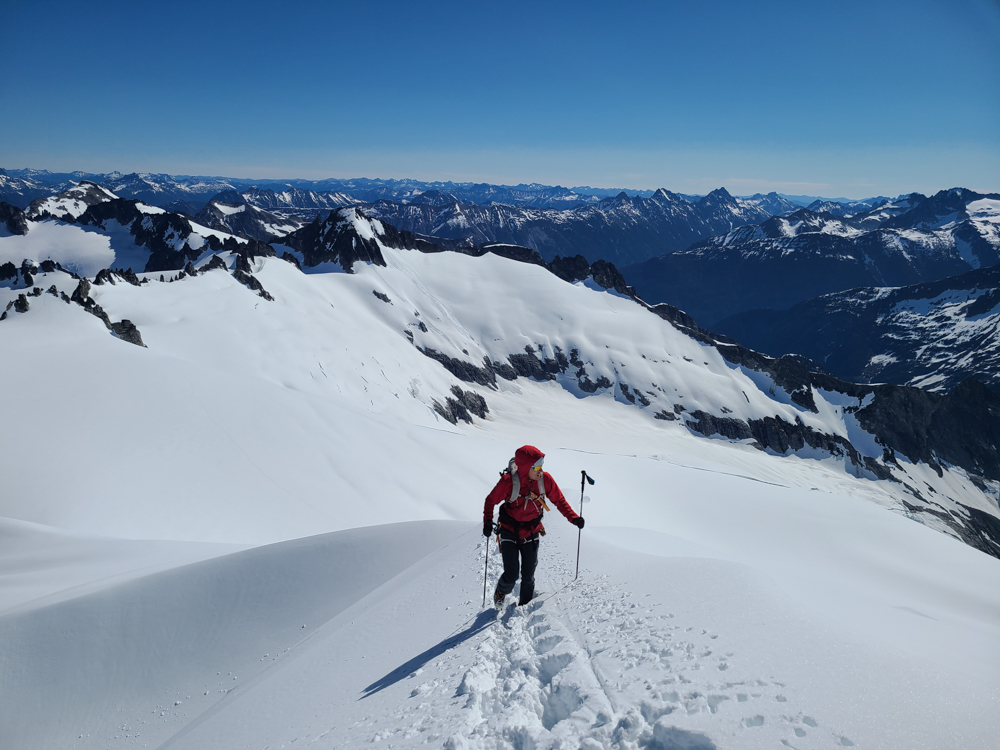
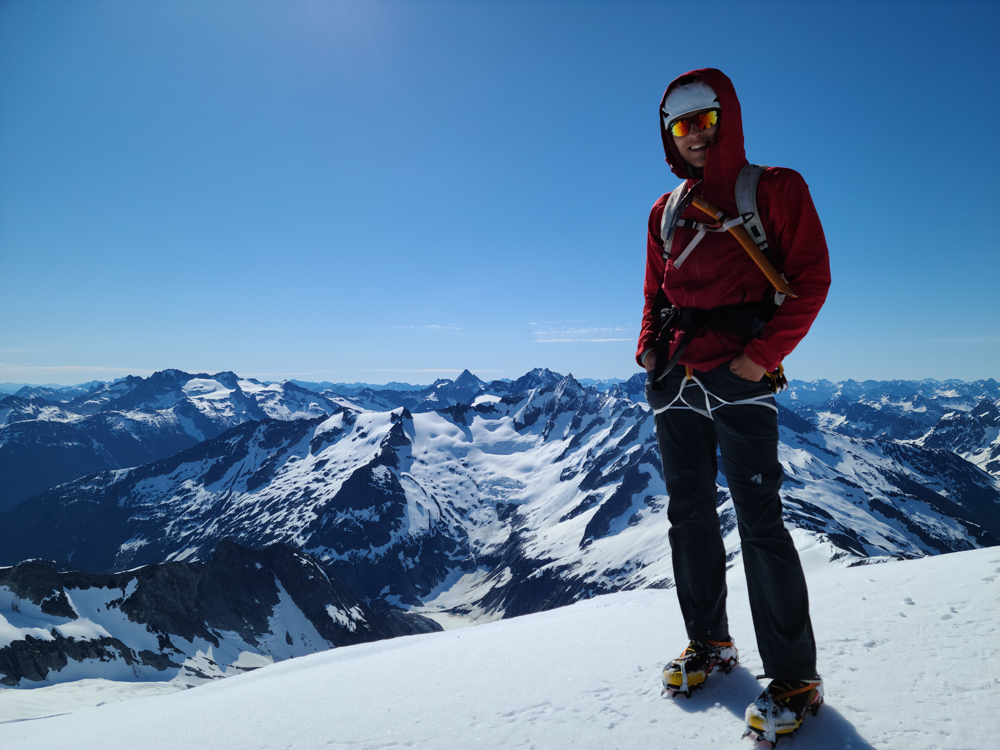
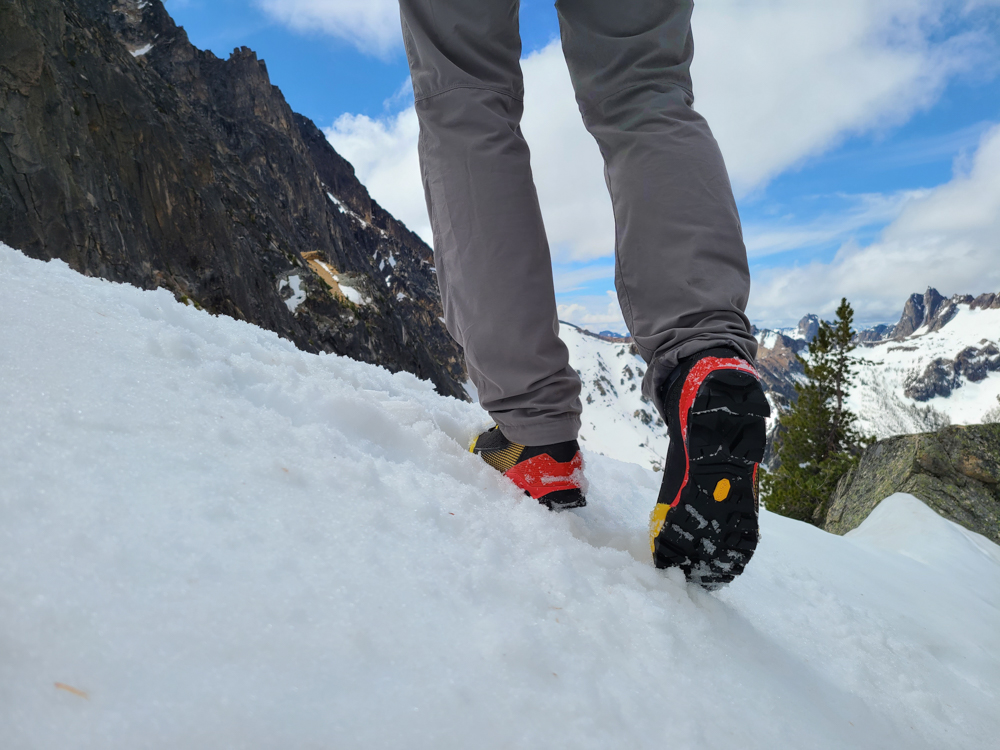
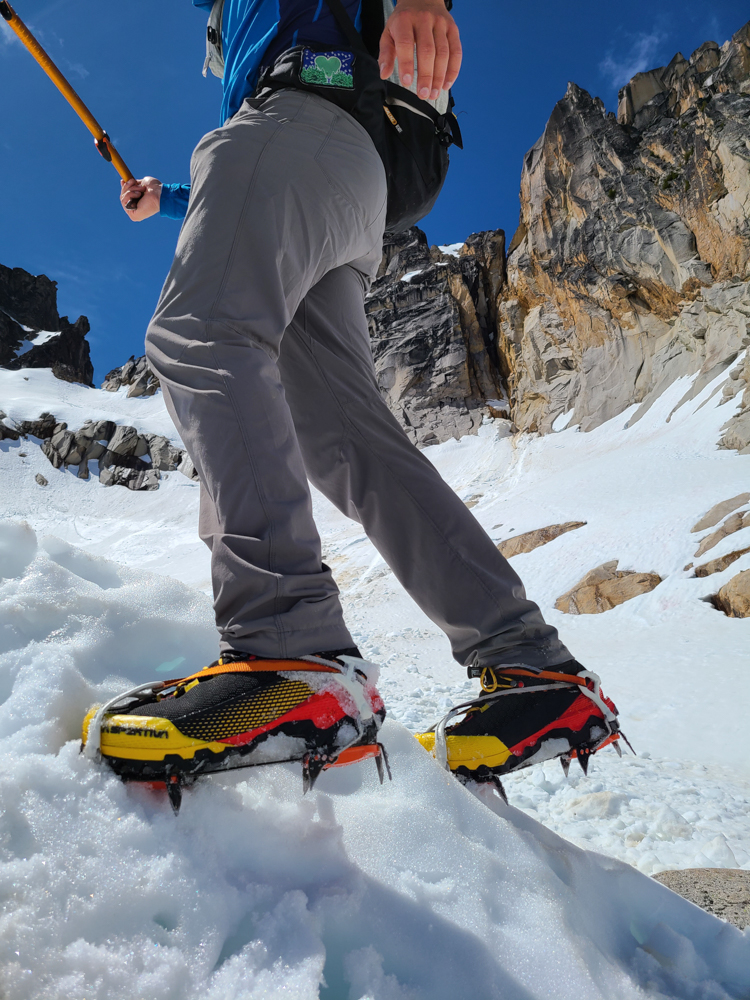
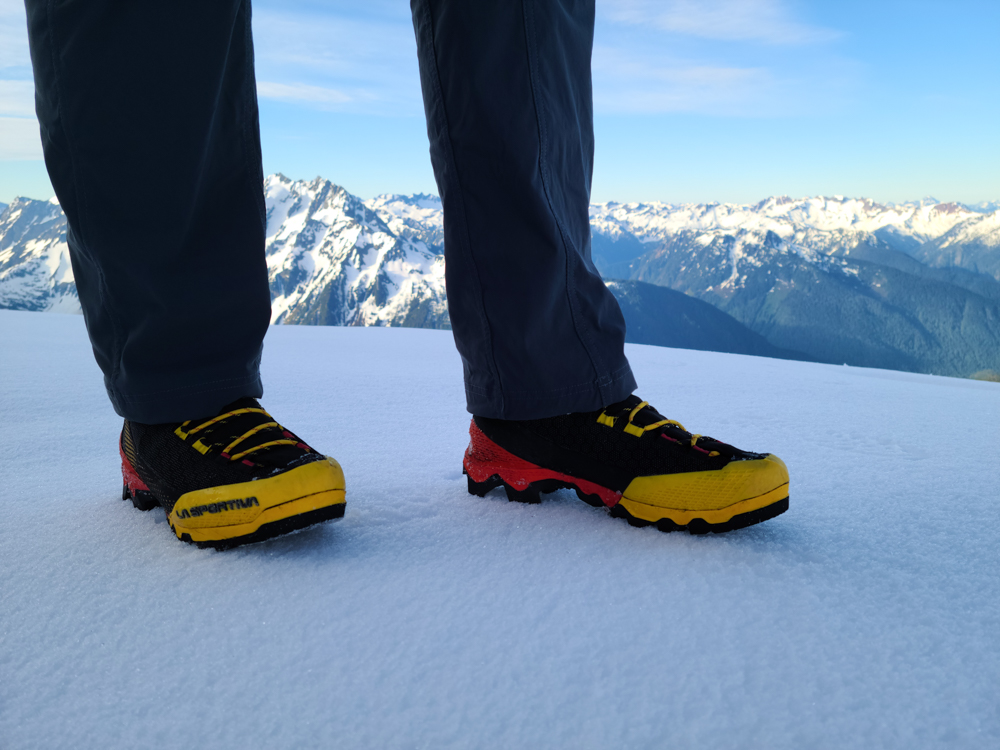
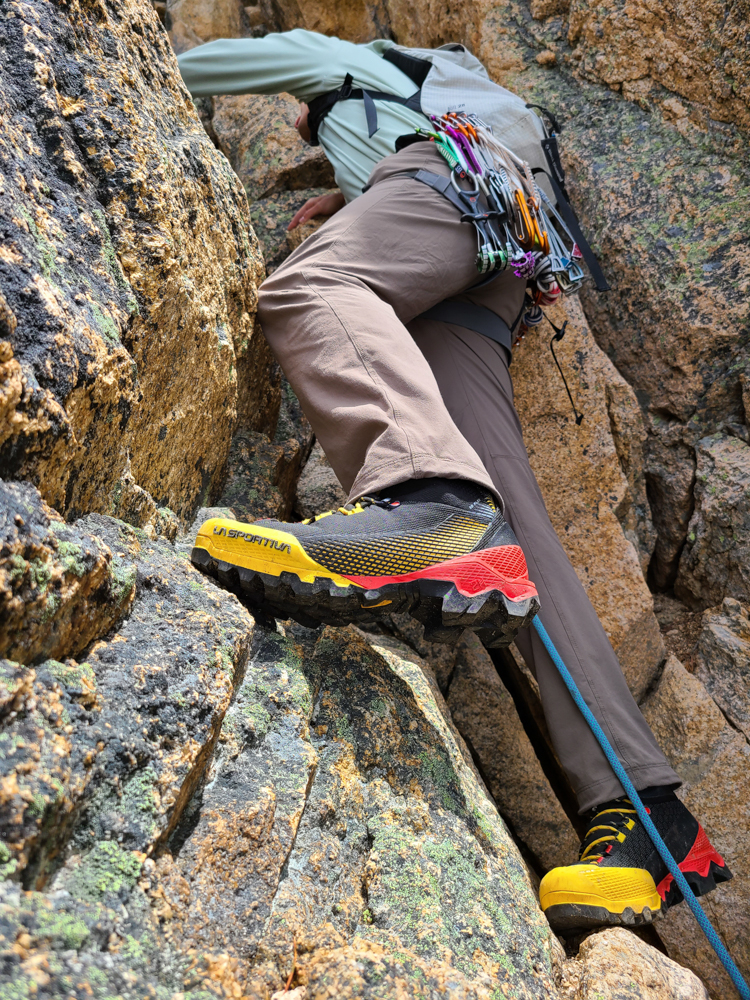
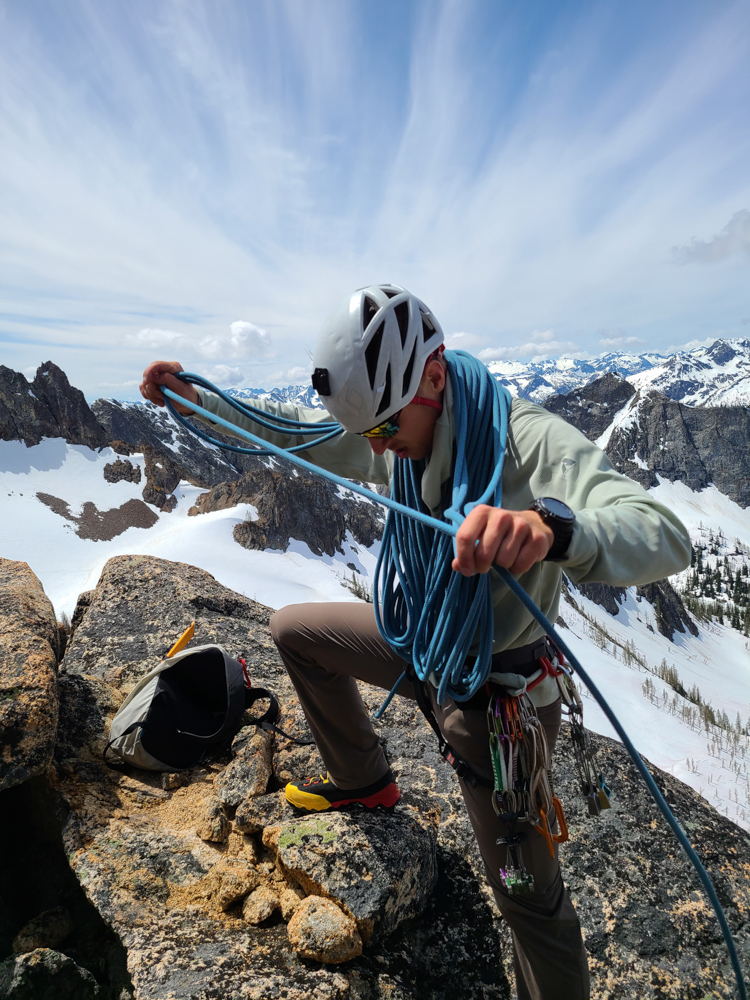
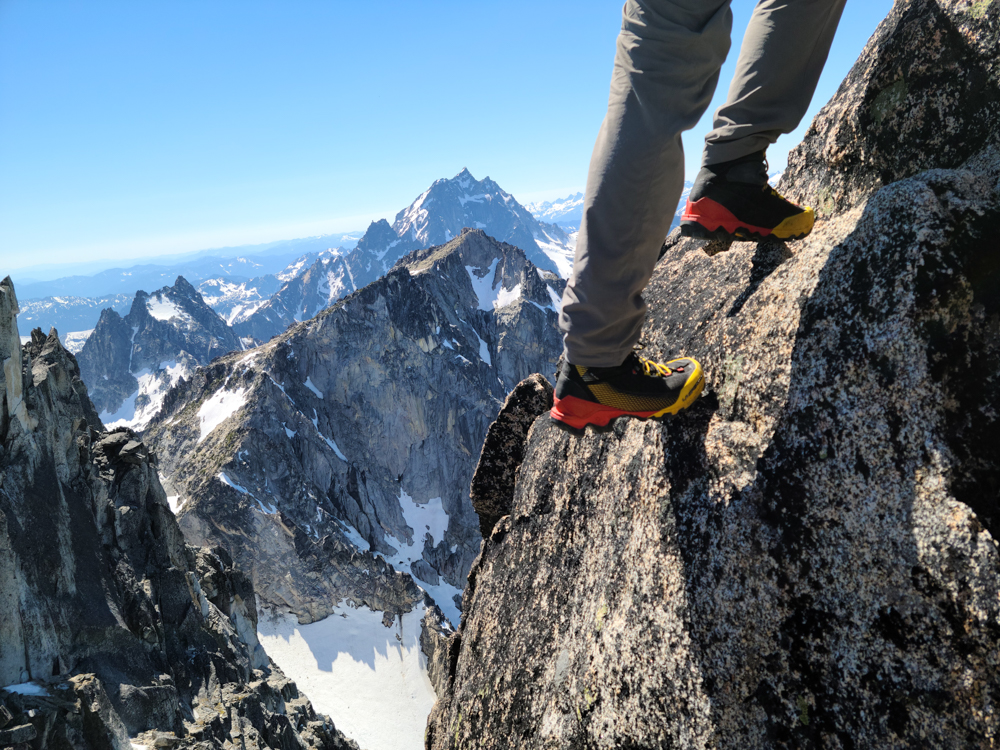
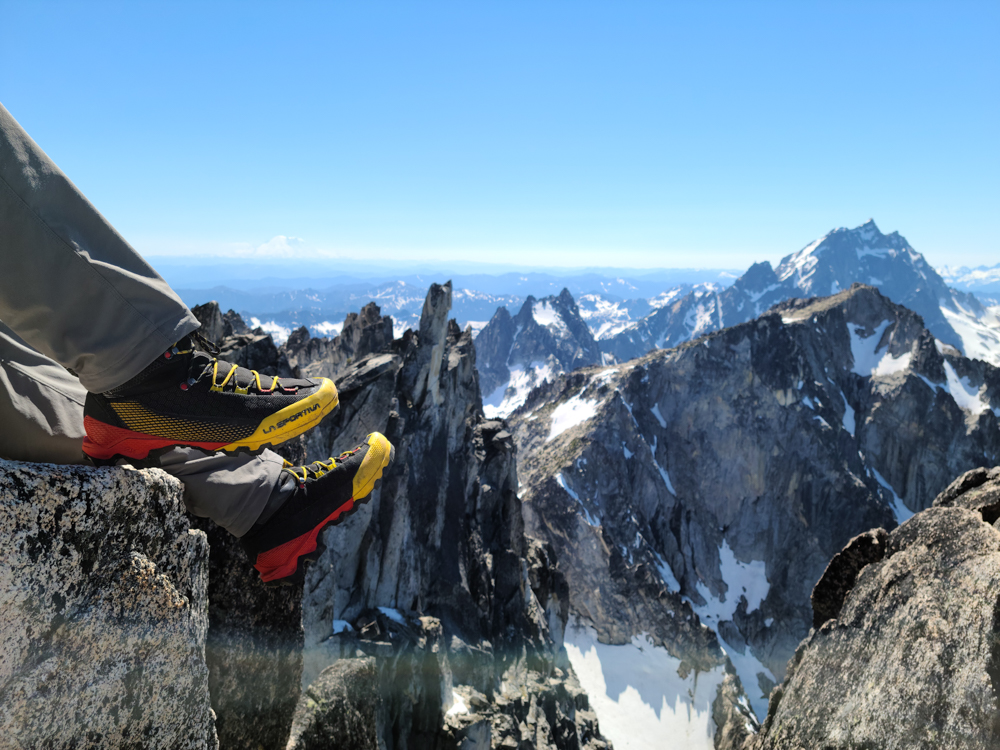
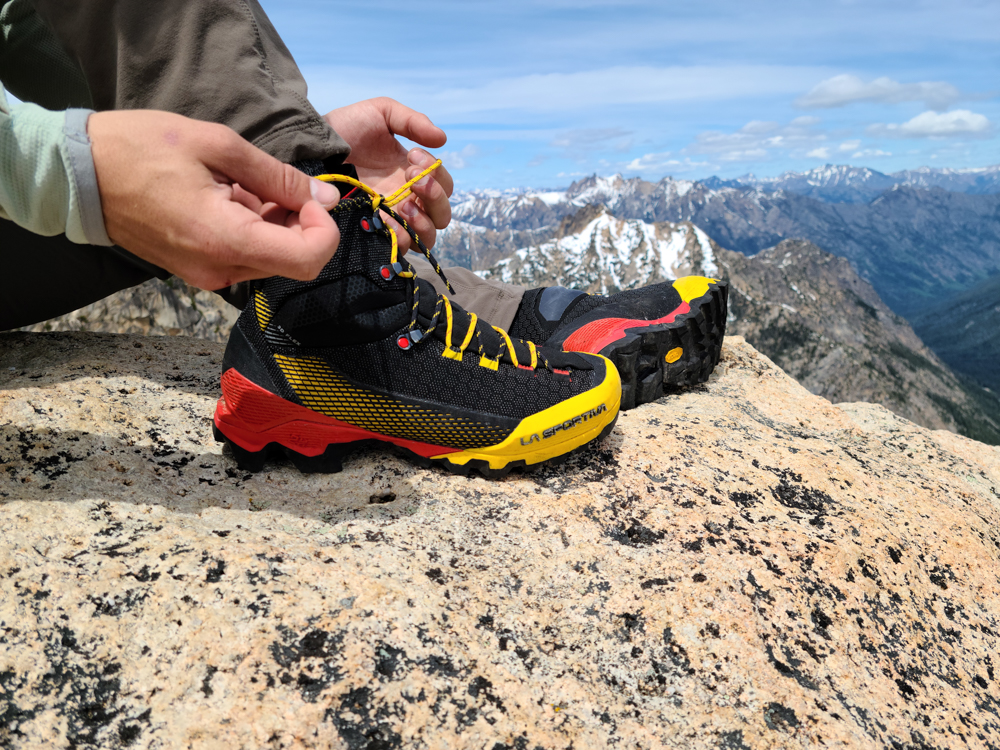
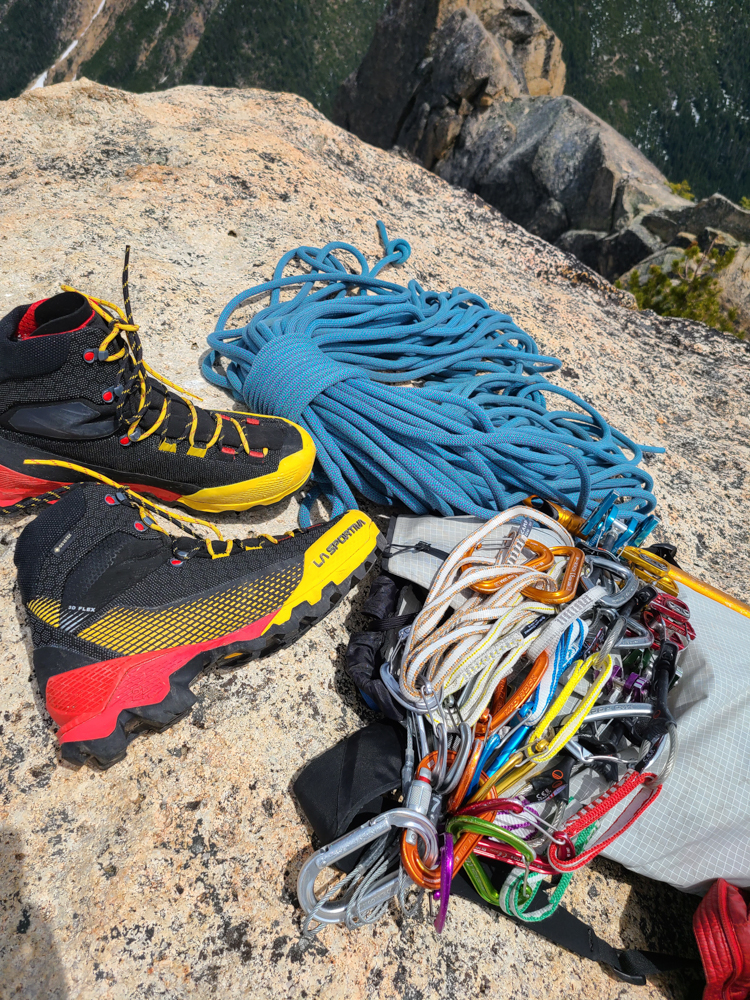
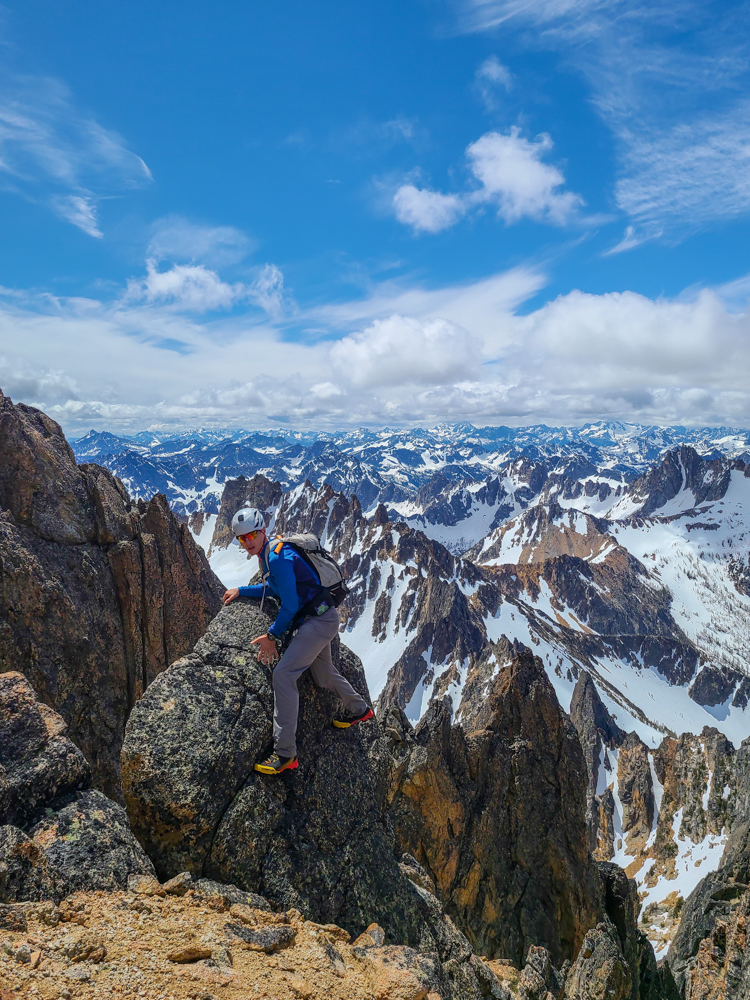
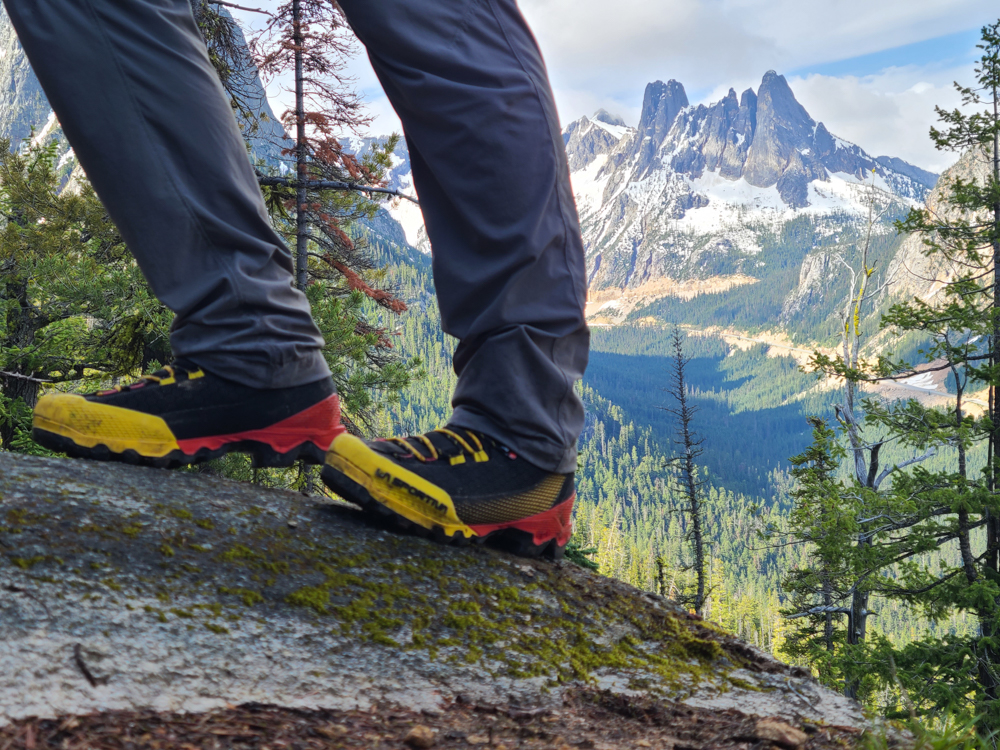
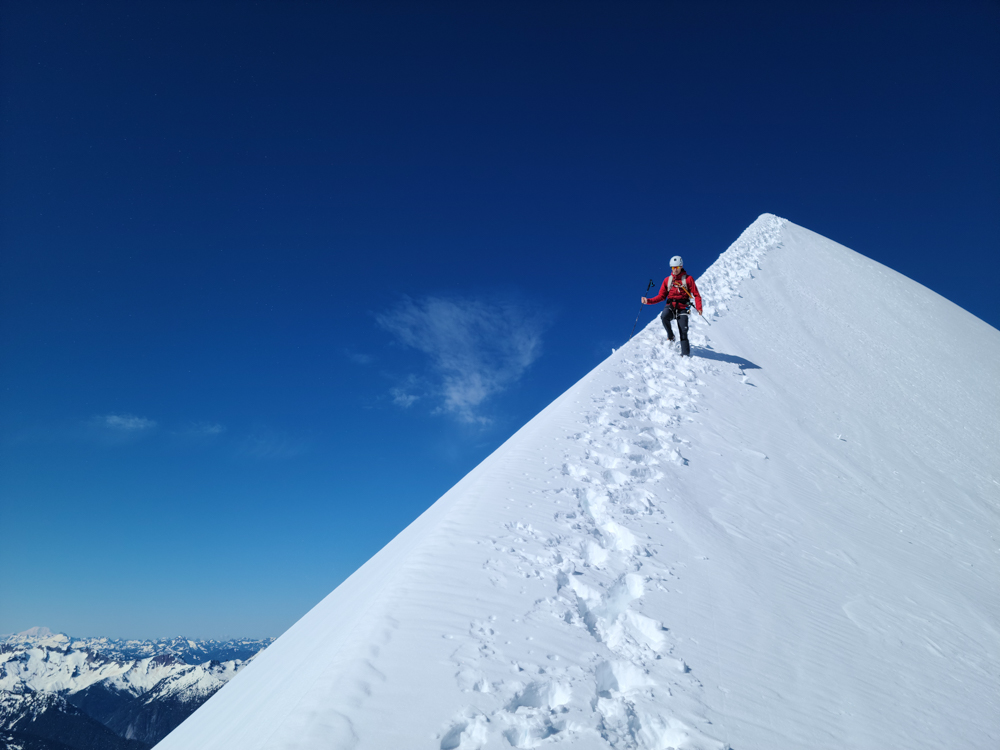

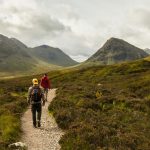


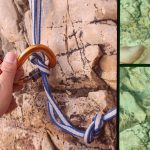
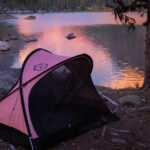

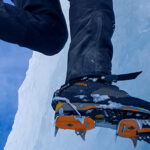


Hi! Can you said the weight and size?
And how compare against tx4 Midor trango tech in sizing, comfort and performance?
Thanks
Thanks for your comment, Gabriel! I personally have not tried these boots but can provide information on the weight:
The Aequilibrium ST GTX boot weighs: 22.2 oz (630g)
The TX4 Mid GTX boot weighs: 16.20 oz (460g)
The Trango Tech GTX boot weighs: 21.8 oz (620g)
Hey Gabriel, (and thanks Kelly for the help)
Compared to the Trangos Id say the Aequil’s are a bit stiffer in the midsole, and seem a bit more protective of the toes due to a firm plastic toe rand. Same comparison to TX4 mids but more so. Sizing for me was the same as all my other Sportiva footwear (which is lots), but you can probably find Trangos to try on and the size should be the same.
Note: while the Aequil’s are a nice stiff platform for climbing (for a 3 season boot), they dont have any if that awkward skiboot clunk when walking.
What crampons are you using with the Aequalibrium? I have heard the fit is a little hard to pair with crampons.
Hey Jerry,
These boots work with any universal or semi-auto crampons. Ive used Petzl Darts, Irvis, Leopards, and Grivel Airtechs. There can be some weirdness getting the frame of the heel piece on crampons to fit snug against the back lugs of the boots since they are angled for better downhill braking, but it isnt the hardest to adjust the crampons around that piece.
Cheers,
Hey,
i wanted to ask you which crampons are you using and did you have trouble finding some fitting ones?
Best, David
Hey David,
I used the Petzl Irvis and the Petzl Leopard on these boots, and both worked great. Most crampons have tons of adjustability, and should fit well on these boots. The boot is stiff enough to work well with a dyneema linked crampon such as the Leopard, and the heel welt gives you the added option of semi-automatic crampon attachment.
Hi Evan,
I bought these boots for an alpine tour and they were really great out of the box. However I could not get the tie-on crampons to stay on properly. The reason is that the boot sole kicks up at the back leaving nothing to push against the lip of the crampon. Over time the crampon would ride forwards as it only has front to back friction from the back tie-in points, and because these push on the sides of the sole the friction is not enough to keep the crampon in one place. Hope this makes sense.
Does the semi-automatic crampon work better in this respect? Does it keep the boot from riding forward?
Best, Dirk
Sorry, I mean does it keep the crampon from moving forward?
Hey Dirk,
I think I have an idea of the issue that you are describing with universal fit crampons. If the heel of the boot is sliding further back in the crampon, it may just require sizing the crampon down a bit to adjust for this. It would look a little less than textbook, but the security of the crampon should be fine. The semi-auto crampon attachment system would also solve this issue just fine, as the heel-welt on the boot creates a single interaction point for the crampon.
Hey, i have never tried mountain boots before, please help me to decide 🙂 however I’m doing mix kind of hiking over snow and rocky terrain more than mountain climbing, will it be useful for such activity or painful 😊 considering its stiff platform?
I’m looking for multi purpose boots where I can use it for hiking in all kind of conditions.
Hey Anas,
Its hard to tell exactly what footwear will be best for you, as many factors such as footshape and specific terrains will dictate so much. However, these Aequilibriums are a 3-season mountaineering boot, meant for warmer temps and longer hikes, which means they are significantly less stiff and uncomfortable compared to winter counterparts.
Hey Evan,
I am a big LaSportiva Fan ever since I lived in Switzerland a few years ago. Hence I own several of them, Nepal GTX, Trango Towers, Bushido, Tempest, Uragano etc.
When the Aequilibriums released I was really amazed by their stunning look, – and presumably by the performance to be expected – but now that I live in the „low lands“ in Germany I was wondering if I should go for them or not.
The area that you live in is by no means comparable to this area but honestly, your Review inspired me to give them a try as a motivator for any of my next hiking trips. (Bavarian/Swiss alps, Tansania)
So they arrived yesterday and although they haven’t left the house yet, their fit and their overall impression is superb. Once your foot managed to pass the cuff it is surrounded by a perfect fit, no itching or not even an awkward or disturbing thread.
In LaSportiva Trail runners, I am a 44,5, in Trango and Nepal I am 45 and the ordered Aequilibriums in 45 are the perfect fit, both in length and width (for a medium width but strong foot)
The lacing provides a uniquely proper lock of the foot in the heel and it’s black/yellow duo-color lace creates a really cool look! Just make sure to flatten the tongue after lacing and there’s no irritation to be expected at all.
My „Achilles heel“ is my scar from an Achilles ligament rupture and even there, the flexibel collar provides an undisturbed fit.
So far for the moment, if anyone’s interested I’ll add my first hiking experiences later on.
Glückauf from Germany,
Torge
Hey Torge – Thanks so much for sharing your initial thoughts on the Aequilibriums! We’d love to hear more of your feedback once you’re able to get them out in the mountains 🙂
Hey Torge, great to hear the boots worked well for you too! Im sure they will work well enough for you on your hikes, but they may not have quite the comfort of say a trail runner. And good solution for the tongue crowding issue.
-Evan
Hey Evan this is an awesome review. I am trying to decided between the st and lt models. I have been looking and looking and am unable to really define a difference between the two, other than one being leather and the other synthetic upper. I am looking for something that is durable that can handle typical hiking/mountaineering in elevations from 14-16 thousand feet (Colorado Rockies/Mt Rainier), the ST looks like a beast. I am just trying to figure the difference between the two if you know of any. Thanks for any feedback.
Aaron
Hey Aaron!
Good question, and to be honest, I don’t have a great answer for you. The LT is the tiniest fraction heavier, but it is pretty nominal. I know in the past leather has been considered more durable and waterproof, but modern synthetics are getting super tough, and my ST’s were remarkably waterproof. Id say the difference is marginal enough, you are going to have a tough choice. Maybe save the $30, go for the leather ones, and buy yourself some fancy six-pack to make up for it.
-Evan
Hello, I am wanting to try out the Aequilibrium STs but I have one nagging concern. To use them as my sole snow / 3 season boot, I need to use them with my MSR Lightning Explore snowshoes before switching into crampons. Do you think the double heel lugs would be an issue when coming down hard on a pair of snowshoes when avoiding a fall / misstep? Any other thoughts or concerns about wearing these with snow shoes?
Hey Colton!
I dont think the heel lugs would cause much of an issue with snowshoes. That MSR nylon canvas stuff is pretty tough, and the lugs are fairly similar surface area to a normal boot, so they shouldnt magnify pressure too much. They dont have any sharp edges or anything on the soft rubber, Id say it would interact like any other boot, just dont go wailing too hard on them like normal.
Cheers,
Hi – thanks for the thoughtful review – curious how stiff the sole is. I have a problem with my first metatarsal and need a completely stiff boot or something as close to completely stiff as possible – appreciate your thoughts.
Hey John,
I dont know your exact situation, but I found the boot to be suprisingly stiff for a 3-season boot. It certainly isnt as stiff as a big winter boot meant for iceclimbing, or a skiboot, but it is pretty rigid and supportive.
Hi. First thanks Evan and Torge
I just have only 2 questions;
1. Is this warm enough for just like 10°F to -20°F?
2. Can I use this for a minor ice climbing?
Than you so much
Hey Ambie,
I would hesitate to recommend this boot for such cold temps. It is designed as a 3-season boot, and has fairly minimal insulation. -20°F is pretty dang cold! The boot should be able to handle shorter sections of easy ice climbing, but that is going to be a fairly personal choice based on comfort preferences, as it certainly wont be the best thing to climb tons of ice in.
Cheers,
Hi Evan,
Great review thanks.
I live in Scotland and I’m looking for a boot for winter climbs on the Scottish Munro’s which are all mountains 3000ft and above so not overly high. I don’t intend to do any technical ice climbs but intend on buying C2 crampons incase needed on compact snow and ice.
Did these boots keep your feet warm whilst walking in snow? How did they perform on thicker snow? And would you recommend them for the kind of winter weather we have here in Scotland, cold (not usually colder than -10 C), windy and wet!
I intend to use them all year round in to summer and they look perfect for the summer months but just wanted to check with you your thoughts or if you think a bigger thicker boots would be more appropriate?
Thanks.
Hey Kyle!
I love me some hillwalking, and these boots would be great for your area! A lap up the Curved Ridge would be perfect terrain for them. They served me well in the clumpy cascade snow and even on summer days up Mt Rainier (4400m), although I would bet they would be too cold for Scottish winters. If you are continously moving and generating heat, then Im sure they would be fine, but if you had to stop for any reasonable amount of time, the lack of insulation would certainly start to seep in. On the plus side, I know how darned wet those moors can get, and these boots would do a great job of keeping that boggy water out, so long as you dont completely submerge them.
Cheers and happy rambling!
Howdy,
Just got my new pair, woo!
Maybe this was already covered (read this article a few days ago and don’t remember all of it now), but would some sort of shoe sealant be beneficial for these? More importantly, would it damage the boot? I’ve only used shoe-goo before as a last ditch effort to save old boots, and don’t know anything about other types/brands of sealant. I read somewhere it’s a good idea to add a sealant right when you get them, but there doesn’t appear to be much in the way of stitching on these, so I don’t know if applying it to the glued areas would be detrimental. Any help is much appreciated, thank you!
Hey Bob, I dont think adding any sealant would be harmful, unless you are using really harsh chemicals. However, I used the boots for several months and many long climbs and didnt notice any breakdown or leaking into the boots. I dont know if treating them right out of the box is really necessary, as both the synthetic and leather upper materials should function just fine to keep water and snow out. The only thing that could let stuff in is if you begin to develop a hole in the upper which, given the thickness, I’d say would take some serious usage (a few years of normal use at least).
Hi,
I am new to the Mountaineering scene and bought the women’s version of this boot, La Sportiva Aequilibrium. I was out training on a trail that was very icy on the path. I noticed that walking on ice without crampons was SUPER slippery. More so then my friend who was wearing Salomon Goretex trail shoes. She was trekking along rather well up hill and I was feeling very insecure in my boots. I had crampons and put them on and everything was great. And just still kinda shocked that my friend kept going without crampons or walking sticks in her none mountaineering boots rather well.. Is this typical of Mountaineering boots? Maybe I am missing something but given these are suppose to be good for ice… they should say something like “*accessories (crampons) not included.” lol Like do they mean good with crampons on ice? I am so confused! What do you think?
Hey Patricia,
The surface of ice itself provides almost zero friction, so any footwear without some form of traction like crampons or micro spikes will not be able to walk effectively on it. I’m not sure about the conditions you and your friend were hiking in, but if the surface of the ice had any snow or gravel stuck to it, than her Salomon shoes might have had softer rubber or more surface area that better interacted with those small surfaces and gained her traction. As well as that, some level of technique can come in to play on snowy or slippery surfaces, and people with more experience walking on such surfaces may make things look a lot easier.
As far as these boots go, they are very well designed for walking in snowy/icy environments. The deep lugs in the sole help gain traction in soft snow, while facilitating clearing of that snow so it doesn’t clump underfoot. As stated previously, any footwear will need crampons to walk/climb on icy surfaces, as ice itself has virtually no friction. As is often the case with winter trails, snow can be packed down to an almost ice-like surface, and can require balance and footwork that is hard to describe, and best learned through safe experience.
My question was deleted. weird.
I will try again! Did you find any traction on ice using theses boots? I found the to be very slippery. Is that normal for mountaineering boots??? My friend I was walking with on an icy trail had better luck in trail runners without crampons they I did with these boots. Is that typical of a mountaineering boot without crampons? I purchased them after reading this review so I am very curious about your experience with the boots on icy trails without crampons. Thank you!! -Patri Sequoia
Hi Evan! I am wondering if these boots would be ideal for climbing the Matterhorn in the summer? Which involves lots of rock then 50 degree snow at the top with crampons. I have some Trango Cubes but they hurt my feet a bit. How would you compare these to the Trango Cubes ( which have been discontinued) . Thanks!!! John
Hey John,
These are a perfect Matterhorn boot. Great for rock scrambles and low grade rock climbing, as well as steep snow with crampons. They are a pretty similar last to the Trango, but you should try them on and see if they work for you.
Hey Evan!
Great review!!! So helpful!!!
I do high country hiking/climbing in Colorado and will be headed to Kilimanjaro… I’m wondering if you could share whats the low temp you think my feet would stay warm?!?
And if you recommend a different boom for more intense cold weather hiking in rugged mountains with lots of snow and temps below freezing…
Easily 15 freight and lower…
Thanks so much!
Dora
Hey Dora,
A lot of those questions are probably best answered by a guide on Kilimanjaro or someone with more experience on it. However, I suspect the Aequilibrium boot would certainly be a good fit, since its in the general weight-class for a Kili boot, and would have more than enough technical features on it. Depending on logistics, you may need a warmer boot at camp when you are no longer moving, but this could easily be solved with a down bootie.
Cheers,